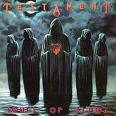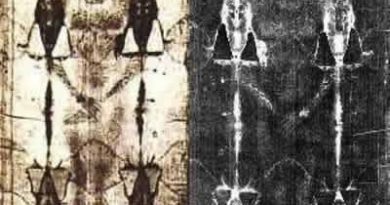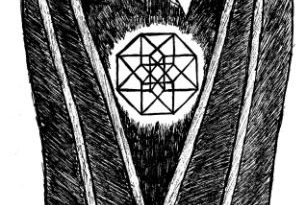Sympathy of Souls
Telepathy more often known, today, as ESP – is thought of as the most common of all paranormal phenomena. Yet, at the same time, it is also one of the most problematic, in being contrary to what science tells us about mind and the universe.
To science the mind is disconnected from other minds and the universe. Hence, any ability for mind to mind contact is impossible. The nearest such instant communication will come is, they advise, text messaging.
THE WILKINS SHERMAN EXPERIMENT
One of the most impressive cases of ESP involved explorer Sir Hubert Wilkins and researcher Harold Sherman over 68 nights during an Arctic expedition (1937-38). As arranged, in the Arctic, Sir Hubert would spend some time each evening thinking about the day.
Back in New York, Sherman tried to put down Sir Huberts thoughts, his impressions then given to researcher Gardner Murphy to be kept until notes could be compared. How well did this test do?
On one night Sherman thought of ping-pong balls. Sir Hubert had played ping-pong that night. On another night he thought the team had had some rare wine. Sir Hubert confirmed later it was blueberry.
On another occasion Sherman thought Sir Hubert had been on an early flight to Saskatchewan but was forced to land because of bad weather at Regina. Here, he attended a party in an evening suit. Unlikely? Sir Huberts notes later confirmed every detail to be correct. The evening suit had been leant to him.
EARLY RESEARCH
Scientific study of ESP began in earnest at the turn of the 20th century. Sir Oliver Lodge was an early experimenter, eventually producing two girls who seemed to be able to read each others minds. However, their success declined rapidly when they were not holding hands.
By the 1930s, American writer Upton Sinclair began tests with his wife in which he would sketch little drawings and try to transmit them to her. In one test he drew a volcano whilst his wife produced a beetle. Was this a miss? Both images were of a long, thin squiggle with an inverted v at the bottom.
It was about this time that plant botanist J B Rhine got involved in providing a new methodology for research. Throughout the 1930s he worked at Duke University with Zener cards – a twenty five card pack with five sets of images.
Whilst one person would turn over a card, another person would attempt to identify what it was. Over a series of many runs the degree of success could be expressed statistically. If this statistic was above chance, then it was indicative of ESP being involved.
ALTERED STATES
By the 1960s it became obvious that testing could better occur if the subject was removed from normal information input, aping trances and other altered states as attributed to mediums.
Parapsychologists Stanley Krippner and Montague Ullman achieved this at their Dream Laboratory at the Maimonides Medical Centre, New York. Subjects would go there to sleep. Meanwhile, an experimenter would stare at a picture in another room.
When the sleeper approached REM sleep he would be woken up and asked to describe his thoughts. The following morning he would be shown a series of pictures. Some subjects were repeatedly successful above chance.
By the 1970s American researcher Charles Honorton advanced the process of testing by developing the Ganzfeld, still used in tests around the world today. Here a subject is relaxed and placed in a state of sensory deprivation – usually white noise played through headphones and half ping pong balls taped over eyes.
In this state he is required to concentrate on another subject in another room, who, as in the Dream Laboratory, is looking at a number of target pictures, selecting one for particular attention.
The relaxed subject then talks about the images that come into his head, which are then compared to the target picture. Again, there have been many successes against chance.
THEORIES OF ESP
The problem with ESP is that it seems to conflict totally with how science sees the world as working. Early SPR member Dame Edith Lyttleton realised this when she said: Telepathy does not merely bridge space, it annihilates it – space becomes an irrelevance.
Various physical theories have been proposed for ESP over the years. Two central ideas are that information is carried on either radio-like waves or chemical messengers such as macrophages which connect cell tissue; or pheromones, which can best be explained as airborne hormones. However, it is unlikely that either of these ideas will ever bear fruit.
Other researchers refer to psychologist Carl Jung and his theory of a collective unconscious. To Jung, underlying the personal unconscious we have a connection of minds, through which collective images and impulses can rise into the personal conscious.
This vehicle has often been used as a possible mechanisms for ESP. Unfortunately, whilst it is attractive as a concept, and certainly has importance for human psychology, it holds no scientific credibility in itself.
A UNIVERSAL SYMPATHY
The physicist David Bohm theorised that the universe was holographic in nature, in that information is composed of a field that can be accessed by any part of the universe. To Bohm, this happened because the universe bends in on itself to such an extent that – at an information level – the particle and the universe are one and the same.
Such an idea is presented because of the accepted ability of a subatomic particle to simultaneously affect another regardless of the distance between them.
This known annihilation of space is not applied to ESP by science for they argue that quantum effects cannot infiltrate into normal existence. But nowadays this argument is becoming unconvincing, mainly due to the discovery of microtubules.
A cell, including brain cells, have been shown to have a cytoskeleton made up of the protein, tubulin. These microtubules are so small that it has been theorised that they could react at a subatomic level, thus allowing quantum properties into brain processes.
It has even been theorised that microtubules could be tiny on/off switches, forming a kind of computer to process subatomic effects.
IN CONCLUSION
Concepts exist in the universe, and in the cellular construction of life, that could conceivably allow information flow instantaneously throughout the universe. Similarly, experimentation has shown that, when outside information is reduced, allowing the mind to concentrate on itself, this flow of information is more accessible.
It seems, therefore, that telepathy, or ESP, may not be as problematic as was once thought. Indeed, it is becoming increasingly clear that the most problematic part of the phenomenon is the general mood towards denial in science itself.
© Anthony North, October 2007



